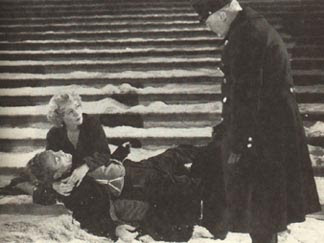Are you one of those people who knows more about old Hollywood than anyone else in your circle of friends? Do you know who was who at every major studio? Do you know the seamy side of the silver screen? Do you think you have a book in you?
Steven M. Painter, a film scholar who holds a Masters Degree in Film Studies, took that knowledge of all of the grimy inner workings of our favorite west coast town and has written "Take Her For a Ride: A Hollywood Story." While the novel reads like a film noir of the 1940s, it actually takes place in the early 1930s when talkies were new and booze was still banned.
"Take Her For a Ride" tells the story of Paul Russell , a big shot producer at Universal Pictures, his struggling actress girlfriend, Lillian Nelson, and Paul's able secretary Vera (who happens to long for Paul while sharing living accommodations with Lil). Supporting characters include James Cagney, Joan Blondell, Lon Chaney, Bela Lugosi, Louise Brooks, Douglas Fairbanks,Jr., Norma Shearer, Jack Warner, Irving Thalberg and a host of Laemmles.
It's a story that zips along nicely. Paul's trial and tribulations at Universal (especially with Laemmle, Jr.) are well done and give insight into how much work really goes into making a movie. Lillian's climb to success at Warner Brothers is also depicted in believable detail. Lillian works like a dog, most of the time doing non-camera work, before things start to break her way. All of the glamour is in front of the camera. Deceit, sweat, determination, failure and heartbreak take place behind the scenes. The story of the making of the film "Dracula" seems very real and well researched and the depiction of Lugosi as an overcooked ham is quite amusing.
However, Painter, in choosing to plunk his fictional characters down in historical events, encounters those pesky annoyances called facts, and herein lies the danger of self-publishing. These are small things, but the head of Columbia was Harry Cohn, not Harry Cohen, the actor who stars in "God's Gift To Women, " one of the films in which Lillian appears, is Frank Fay, not Frank Fey, and though he states that Louise Brooks, who also appears in that film, was known as the girl in the black helmet, that description came from Kenneth Tynan's famous 1979 New Yorker article about Brooks. Actors have roles, not rolls, and Jack Warner referred to a script as possible carp when I think he meant crap (but maybe not). A good proofreader could have helped Mr. Painter's cause. I take issue with Mr. Painter's rather cruel descriptions of Joan Crawford (being on Team Crawford myself), but I've become used to that.
But, no matter. All in all, "Take Her For a Ride" is a fun story of the ups and downs and ins and outs of Hollywood in the early 1930s where everyone is taken for a ride by someone. Paul and Lil work it out, but in typically Hollywood fashion (of course). It just might make a swell movie.
"Take Her For a Ride" is available online at Amazon and Barnes and Noble.











.png)


















